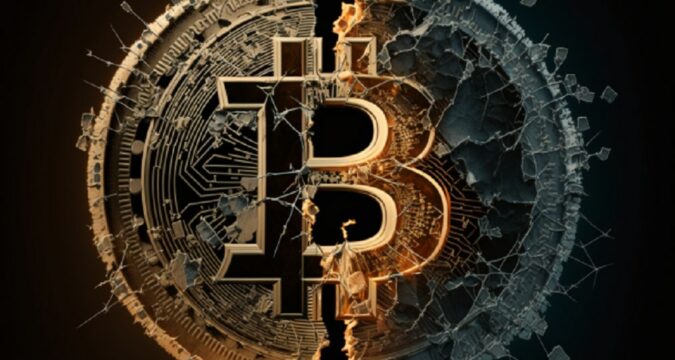
Bitcoin halving is one of the most important events in the life cycle of Bitcoin. It is an event where the amount of Bitcoin paid out as block reward is cut in half and it is of great significance.
In this guide, we will discuss in detail what the halving is, how it works and what it means for Bitcoin.
Before we go into describing the halving, let’s first look into how the Bitcoin network operates.
What makes the network to keep working non-stop? How are new Bitcoins produced?
The Bitcoin Network
You may have heard of the Bitcoin network or you haven’t, it doesn’t matter. The Bitcoin network is the oldest crypto network since it was the first cryptocurrency to be launched.
The network is maintained by a number of nodes, which are computers that operate the full Bitcoin wallet, i.e. they have the record of the full blockchain.
The network uses a proof-of-work consensus mechanism which requires the use of sophisticated hardware to solve difficult mathematical puzzles in a process called mining.
New transaction blocks are mined and transactions verified through this process, and those “cracking” the puzzles are called miners.
As they mine the blocks, new Bitcoins are released to them as reward. This is called the block reward and it is the only way that new Bitcoins come into circulation.
The network’s proof-of-work consensus mechanism makes it difficult to fake transactions or try to double spend, because the cost of doing that is so high no one would even dare.
There are thousands of nodes distributed all over the world, which is the secret behind Bitcoin’s true decentralization.
In fact, some argue that bitcoin is the only truly decentralized cryptocurrency network because of this, and such a feature is only obtainable in proof-of-work networks.
What Is Bitcoin Halving?
Bitcoin halving is the cutting of the block reward by half. This happens once roughly every four years, and it is one event that many people look forward to.
The last halving took place in May 2020 and resulted in reducing the block reward from 12.5 BTCs to 6.25 BTCs. The next halving will reduce the block reward to 3.125 BTCs.
This has a lot of implications for the network. The first is that it leads to a steady reduction in the number of BTC that come into circulation.
This means that the number of new BTC will continue to reduce until all the 21 million BTCs are mined.
The second is that Bitcoin mining will become increasingly difficult and less rewarding over time.
This is why Bitcoin mining isn’t as profitable as it used to be when it started with a block reward of 50 BTC in 2009.
Does Halving Affect the Price of Bitcoin?
Bitcoin halving has historically affected the price of Bitcoin positively. Every halving in the past has led to subsequent price rise, which also happened following 2020 halving.
This price increase is the direct impact of the reduced block reward which creates acute shortage, inducing a surge in value.
Within one year of the halving in 2020, Bitcoin price increased by 533%. Even prior to that time, it hit nearly 1,000% increase in March 2021 to reach a new all-time high price of over $60,000.
There are a number of factors involved though, so the increase may not come at the time it is expected to.
It took several months after the halving for the price to start increasing, to the dismay of many enthusiastic crypto people.
Every halving generally leads to an increase in price, but it’s better to approach it with an open mind as the market seems to have its own mind.
Conclusion
Like many crypto investors and enthusiasts, you may be looking forward to the halving in 2024. Before then, the price of Bitcoin may crash to lower levels than where it is today.
It is possible that Bitcoin will not see another new all-time high before the halving.
Whatever is the case, crypto investors shouldn’t be disturbed since Bitcoin investing should be a long term game.
Whatever happens in the short term, things are likely to get better as Bitcoin becomes rarer.


